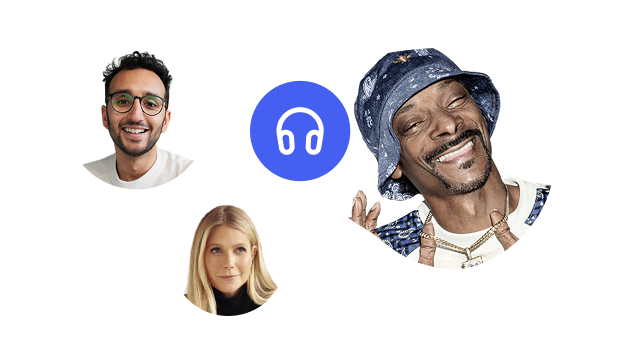Students with Attention-Deficit/Hyperactivity Disorder (ADHD) are often bright, energetic, and creative thinkers who bring incredible imagination to the classroom. But they may also struggle with focus, organization, and impulse control, especially in environments that rely on long periods of attention or repetitive tasks.
For teachers, supporting students with ADHD is about more than managing behavior; it’s about understanding how they learn and helping them use their strengths to succeed. With patience, flexibility, and the right strategies, educators can create classrooms where ADHD learners feel valued, focused, and capable. In this article, we’ll explore everything you need to know about how teachers can support students with ADHD.
Understanding ADHD in the Classroom
ADHD is a neurodevelopmental difference that affects attention, impulse regulation, and executive function. Some students are primarily inattentive, while others are more hyperactive or impulsive, but most experience a mix of both.
These students may forget instructions, lose materials, daydream, or speak out of turn. Yet behind those challenges are quick thinkers who thrive on novelty, hands-on learning, and emotional connection. When their environment supports movement, structure, and engagement, ADHD students can flourish.
Teachers’ Guide for How to Support Students with ADHD
This guide is designed to help teachers recognize the unique strengths and challenges of students with ADHD while offering practical approaches to foster focus, confidence, and success in the classroom.
Build a Classroom That Encourages Movement and Focus
Sitting still for long periods is difficult for students with ADHD. To help them stay engaged, integrate movement into learning whenever possible. Try short “brain breaks,” standing desks, or quick stretch intervals between tasks. Incorporate kinesthetic activities, like role-plays, walk-and-talk discussions, or hands-on demonstrations, to keep attention active. Allowing subtle fidget tools, doodling, or note-taking can also help students channel extra energy productively instead of suppressing it.
Use Clear, Consistent Routines
Predictability is key for students with ADHD. Establish clear classroom routines and use visual schedules to outline the day’s structure. When transitions are coming, like moving from reading to math, give verbal and visual cues to prepare them. Keep instructions short and specific, and check for understanding. Breaking big tasks into small, manageable steps helps prevent overwhelm and procrastination. Visual timers and checklists can also support time management and task completion.
Incorporate Multisensory and Active Learning
ADHD brains thrive on stimulation and novelty. Lessons that involve movement, visuals, and participation hold attention far better than lectures alone. Use color-coded materials, graphic organizers, and collaborative group activities. Let students act out historical events, use manipulatives for math, or create visual summaries of lessons. When learning activates multiple senses, ADHD students stay engaged longer and remember more.
Offer Flexible Seating and Work Options
Every ADHD student’s energy level and focus needs differ. Provide seating options like wobble cushions, standing desks, or floor seating to give students some autonomy in choosing how they learn best. Allow flexibility in how they complete assignments, some may do better recording oral responses, others typing instead of handwriting. A flexible classroom helps ADHD learners feel empowered instead of restricted.
Give Positive, Immediate Feedback
Students with ADHD often receive more criticism than praise, which can erode confidence. Make feedback frequent, specific, and encouraging. Instead of saying, “Stop interrupting,” try, “I like how you waited to share your idea.” Use token systems, verbal praise, or small privileges to reinforce positive behaviors. Recognizing effort, not just results, builds motivation and self-esteem.
Use Tools That Support Attention and Organization
Technology can play a supportive role for ADHD learners. Digital planners, timers, and note-taking apps help with structure and accountability. Speechify, for example, can read digital text aloud, helping students who lose focus while reading stay engaged through listening. Teachers can share classroom materials or assignments as audio so students can review them while moving or doing chores at home. Encouraging responsible use of assistive tech helps students develop independence and self-management skills that will benefit them beyond the classroom.
Break Tasks into Manageable Steps
Large projects can feel overwhelming for students with ADHD because of working-memory challenges. Help them succeed by chunking tasks into smaller parts with clear deadlines. Provide written checklists and verbal reminders for each step. Use color cues to highlight important details, and allow brief breaks between sections. Each small success builds momentum and confidence.
Communicate with Parents and Support Staff
ADHD support works best when teachers, parents, and specialists collaborate. Keep open communication about progress, triggers, and strategies that work both at home and in school. Share routines or tools that help students stay organized, such as daily planners, reminder charts, or listening apps. Consistency across environments reinforces learning habits and reduces stress for the student. If challenges persist, coordinate with counselors or educational psychologists to refine strategies and ensure accommodations. like extra time or quiet testing spaces, are in place.
Foster Emotional Connection and Empathy
ADHD students are often sensitive to tone and feedback. A calm, compassionate approach helps build trust. When a student loses focus or acts impulsively, separate the behavior from the person—redirect instead of reprimand. Building strong relationships increases motivation and cooperation. When students feel that their teacher believes in them, they try harder, take more risks, and grow academically and emotionally.
Celebrate Creativity and Strengths
Students with ADHD bring enormous creativity, humor, and imagination to the classroom. Highlight those qualities through open-ended projects, storytelling, or design tasks that showcase originality. Give them opportunities to lead group work, explore interests, or teach peers through interactive activities. When their natural enthusiasm is channeled productively, it benefits the entire class.
Using Speechify to Support Students with ADHD
For students with ADHD, staying focused while reading can be challenging, especially when tasks involve lengthy text or detailed instructions. Listening while following along visually helps sustain attention and improve comprehension by activating both auditory and visual processing. With customizable playback speed, natural-sounding voices, and highlighting features, Speechify allows each learner to adapt the experience to their focus level. By incorporating Speechify into classroom routines or as a take-home tool, teachers can reduce frustration, support comprehension, and help ADHD students stay organized and engaged without feeling overwhelmed by reading demands.
Teaching with Understanding and Flexibility
Supporting students with ADHD starts with empathy and continues through consistency, creativity, and flexibility. When teachers adapt lessons to meet their needs, by breaking down tasks, encouraging movement, using assistive tools like Speechify, and recognizing progress—students gain not only academic success but lasting confidence. Every ADHD learner has the potential to thrive in a classroom that values how their brain works. When we teach with understanding, we don’t just improve performance—we empower potential.
FAQ
How can teachers help ADHD students focus?
Use short tasks, active lessons, and movement breaks. Give clear structure and visual reminders for transitions and deadlines. Assistive technology like the text to speech app, Speechify, can also help students with ADHD focus.
What classroom tools help students with ADHD?
Visual timers, checklists, planners, and apps like Speechify can improve focus and comprehension by turning text into engaging audio.
Should ADHD students have extra time on tests?
Yes, allowing ADHD students extended time, reduced distractions, or alternate testing formats help them demonstrate what they know without being penalized for slower pacing.
How can teachers manage impulsivity?
Set clear expectations, use calm redirection, and reinforce positive behavior through consistent, encouraging feedback.
What’s most important for teachers to remember?
ADHD is not a lack of effort or discipline. It’s a difference in how the brain processes attention. Compassion, flexibility, and structure can transform a student’s learning experience.





